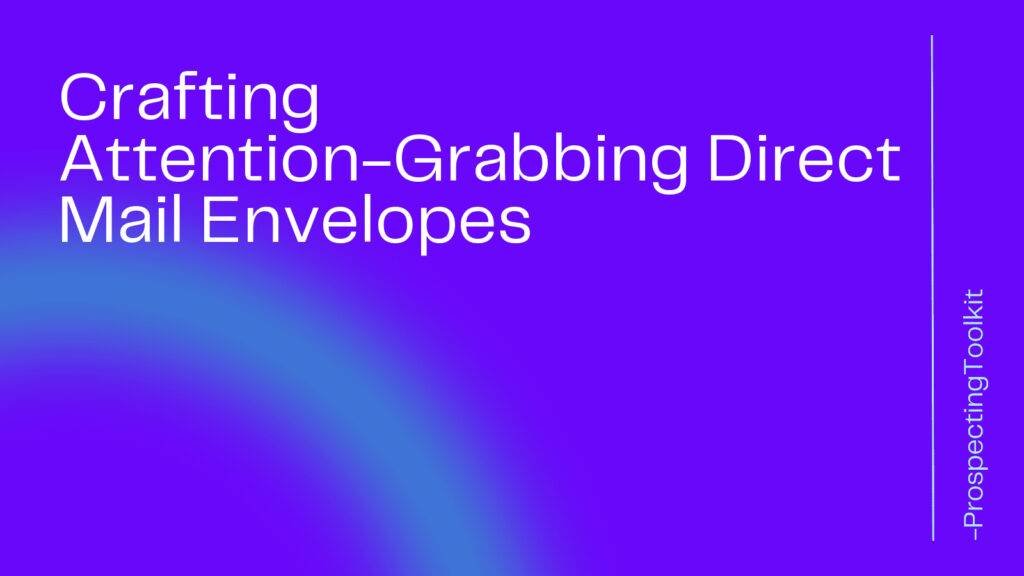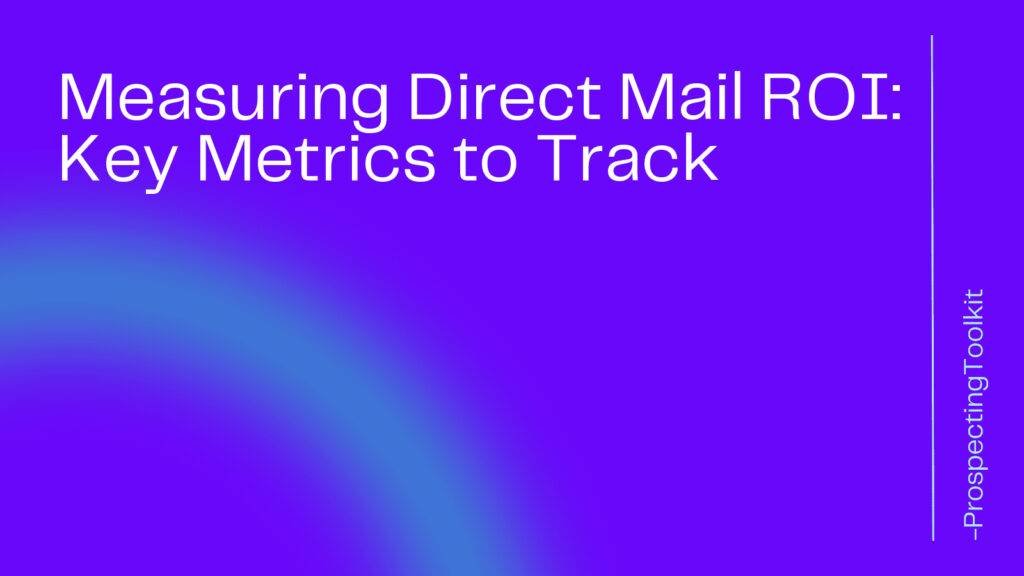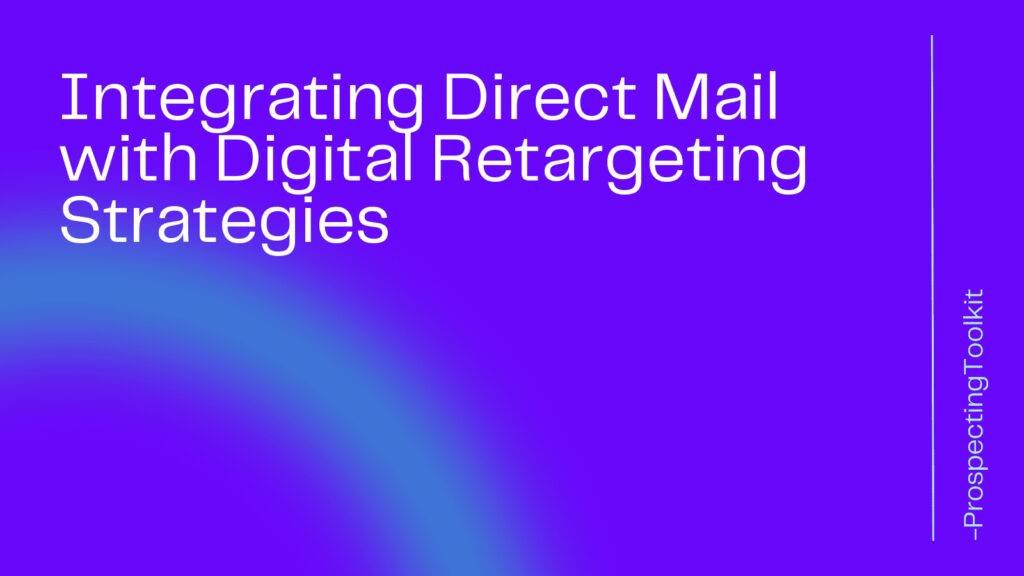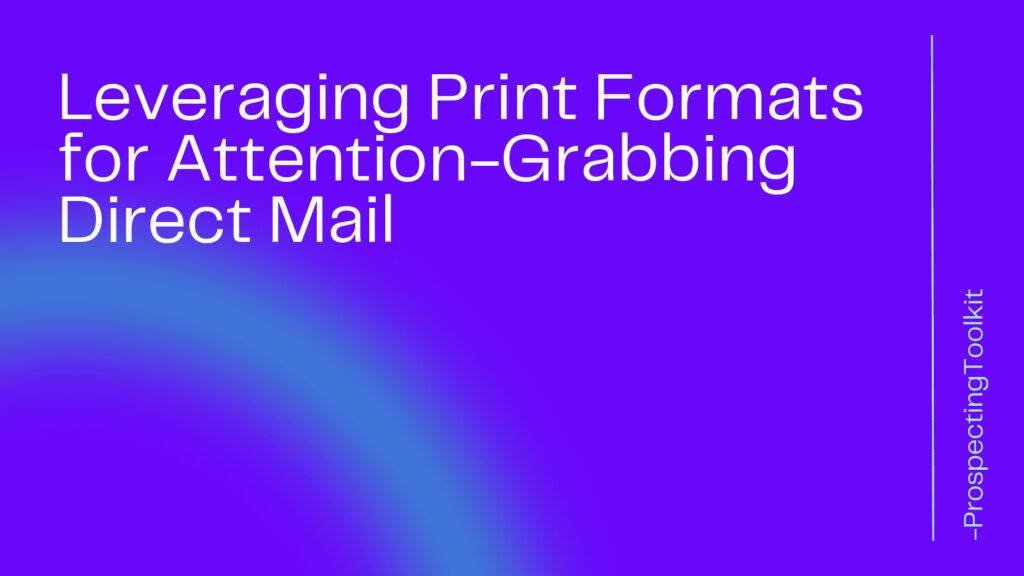Are you looking to expand your business and form strategic partnerships?
Cold emailing can be an effective way to reach out to potential partners and start valuable collaborations.
In this article, we will provide you with some helpful tips on how to cold email for strategic partnerships.
Table of Contents
ToggleWhy strategic partnerships matter
Strategic partnerships are mutually beneficial relationships between two or more businesses that collaborate to achieve common goals.
These partnerships can provide numerous benefits, including:
- Access to new markets: Partnering with another company can give you access to their customer base and help you reach new markets more effectively.
- Shared resources: By forming strategic partnerships, you can pool resources, expertise, and networks with other businesses, enabling you to achieve goals that may have been challenging on your own.
- Innovation: Collaborating with like-minded businesses can lead to innovation and the development of new products or services that can benefit both parties.
Now that you understand the importance of strategic partnerships, let’s dive into how to cold email effectively to initiate these collaborations.
Here are some key tips:
- Personalize your email: Take the time to research the company you are reaching out to and tailor your email to their specific needs and interests.
- Highlight mutual benefits: Clearly communicate the potential benefits and value of collaborating with your business.
- Keep it concise: Be respectful of the recipient’s time by keeping your email concise and to the point.
Remember, successful cold emailing is all about building relationships and showing the potential partner how working together can create mutual success.
Understanding Your Target Audience
When it comes to cold emailing for strategic partnerships, understanding your target audience is crucial.
By identifying potential partners and researching and qualifying leads, you can increase the effectiveness of your outreach efforts.
Identifying potential strategic partners
To start, you need to identify potential partners who align with your business goals and values.
Look for companies or individuals in complementary industries or those who cater to a similar target audience.
Consider reaching out to organizations that have expertise or resources that can enhance your own offerings.
Networking events, industry forums, LinkedIn, X (formerly Twitter), YouTube, and online communities can be valuable sources for finding potential partners.
Researching and qualifying leads
Once you have compiled a list of potential partners, it’s important to research and qualify each lead before sending a cold email.
Take the time to understand their business, products or services, target audience, and any existing partnerships they may have.
This information will help you tailor your email to their specific needs and demonstrate your knowledge and interest in their organization.
Additionally, consider factors such as company size, reputation, and compatibility with your brand.
Remember, you want to establish meaningful partnerships that will be mutually beneficial in the long run.
By understanding your target audience, identifying potential partners, and thoroughly researching and qualifying leads, you can craft compelling cold emails that are more likely to generate positive responses and forge valuable strategic partnerships.
Crafting an Effective Cold Email
Reaching out to potential partners through cold email can be a powerful strategy for growing your business.
However, it’s essential to approach it with a strategic mindset and craft your emails in a way that grabs attention and demonstrates value.
Here are some key points to consider:
Subject lines that grab attention
The subject line is the first thing your recipient sees, so it’s crucial to make it compelling. Aim for a subject line that is concise, personalized, and arouses curiosity. Avoid generic or spammy-sounding subject lines to increase the chances of your email being opened.
Personalization and demonstrating value
Personalizing your cold email is crucial to show that you’ve done your research and are genuinely interested in partnering.
Mention something specific about the recipient’s business or recent achievements to establish a connection. Additionally, clearly communicate the value and benefits of collaborating with your business to pique their interest.
Writing clear and concise email copy
Keep your cold email copy concise and focused.
Get straight to the point by introducing yourself, explaining why you’re reaching out, and highlighting how the partnership could be mutually beneficial.
Use bullet points or subheadings to break down information and make it easier to read. Always end your email with a clear call-to-action, such as scheduling a call or setting up a meeting. Keep it personal, don’t send links or try to automate this.
By following these guidelines, you can increase your chances of getting a positive response and establishing valuable strategic partnerships through cold emails.
Remember to track your results and continuously refine your approach to improve your success rate over time.
Structuring Your Cold Email
Crafting a compelling cold email is an art that can lead to meaningful strategic partnerships for your business.
To increase the chances of success, follow these key steps when structuring your cold email.
Opening with a strong introduction
Start your email with a clear and concise introduction.
Grab the recipient’s attention by addressing them personally and mentioning something relevant and specific about their business or industry.
This shows that you have done your research and increases the chances of them continuing to read your email.
Highlighting mutual interests and benefits
Next, focus on establishing the mutual interests and benefits of forming a strategic partnership.
Explain how collaborating with your business can help the recipient’s company grow or solve a particular challenge they may be facing.
Highlight any unique selling points or strengths that make your business a valuable partner.
Even focusing on something personal you have in common, like a hobby or attending a college can be a great icebreaker.
This will pique their interest and demonstrate the potential value of working together.
Including a call to action
End your cold email with a clear call to action.
Be specific about what you would like the recipient to do, whether it’s scheduling a meeting, joining a webinar, or simply replying to your email.
Make it easy for them to take the desired action by providing clear instructions and contact information.
By following this structuring approach, you improve the chances of creating a positive impression and initiating a productive conversation that can lead to successful strategic partnerships.
Cold Email Best Practices
Strategic partnerships are key for growing your business, and cold emailing can be an effective way to initiate those partnerships.
However, it’s important to approach cold emailing with the right strategies and avoid common mistakes that could hinder your success.
The importance of follow-up emails
- Be persistent: Many people receive numerous emails every day, so it’s easy for your initial email to get lost in the shuffle. Follow up with a friendly reminder to increase your chances of getting a response.
- Provide value: In your follow-up emails, demonstrate the value that a partnership with your business can bring to the recipient. Show how their goals align with yours and offer specific benefits they can expect.
- Stay polite and professional: Even if you don’t receive a response to your initial email, maintain a positive tone in your follow-up messages. Avoid being pushy or demanding; instead, focus on building a relationship based on mutual benefits.
Avoiding common mistakes
- Personalize your emails: Sending generic emails to multiple recipients is a common mistake that can quickly turn off potential partners. Take the time to research and understand each recipient’s business, and tailor your email accordingly.
- Keep it concise: Busy professionals appreciate brevity. Keep your cold emails short and to the point, highlighting the main benefits and requesting a meeting or further discussion.
- Proofread your emails: Typos and grammatical errors can make you appear unprofessional and decrease the chances of a response. Always proofread your emails before sending them.
By following these best practices and avoiding common mistakes, you can increase your chances of success when cold emailing for strategic partnerships.
Remember, the goal is to establish a mutually beneficial relationship with potential partners, so focus on providing value and building trust.
Building and Nurturing Relationships
Offering value and assistance
When it comes to cold emailing for strategic partnerships, one of the most crucial aspects is offering value and assistance to the recipient.
While it is important to highlight the benefits of a partnership with your business, it is equally important to demonstrate how the collaboration will bring value to their organization.
This could be in the form of mutually beneficial growth opportunities, access to a new customer base, or expertise in a particular area.
By focusing on the benefits for the recipient, you are more likely to catch their attention and generate interest in pursuing a partnership.
Additionally, offering assistance or support can also be a powerful way to start building a relationship.
This could be in the form of sharing relevant resources, providing insights or data, or even offering to collaborate on a project or initiative. Video works really good for this.
By demonstrating that you are invested in their success and are willing to contribute, you can earn their trust and lay the foundation for a strong partnership.
Maintaining professionalism and authenticity
When sending cold emails for strategic partnerships, maintaining professionalism and authenticity is key.
Remember to personalize your emails by addressing the recipient by their name and referencing any previous interactions or connections.
This shows that you have taken the time to research and understand their organization, making your email more relevant and engaging.
Furthermore, make sure to keep your email concise and to the point. Busy professionals receive numerous emails daily, so presenting your message in a clear and concise manner increases the chances of them reading and responding to your email.
Be sure to proofread your email for any errors or typos before hitting the send button.
Lastly, staying authentic in your communication is important. It’s okay to showcase your enthusiasm and passion for your business, but avoid overhyping or using jargon that may come across as insincere.
Be genuine and transparent about the benefits and expectations of the partnership, and always follow up promptly and professionally to any replies.
By following these tips, you can increase your chances of forging successful strategic partnerships through cold emailing.
Case Studies: Successful Cold Email Strategies
Real-life examples of effective cold emails
When it comes to forging strategic partnerships, cold emailing can be a powerful tool. But how do you craft a cold email that actually gets results?
Here are some real-life examples of successful cold emails to inspire your own outreach efforts:
- The Personalized Approach: One entrepreneur saw success by customizing each cold email according to the recipient’s interests and needs. By researching the prospect and referencing specific information in the email, they were able to grab the recipient’s attention and show genuine interest in a potential partnership.
- The Value Proposition: Another effective approach is to clearly communicate the value and benefits that a partnership with your business can offer. Highlighting your unique selling points and explaining how the collaboration can mutually benefit both parties can make your email stand out and increase the likelihood of a response.
Lessons learned and key takeaways
Based on these case studies and successful cold email strategies, here are some key takeaways to improve your own cold email outreach:
- Research is key: Take the time to research your prospective partners and tailor your email to their specific needs and interests. This shows that you have done your homework and increases the chances of grabbing their attention.
- Focus on value: Clearly communicate the value and benefits that a partnership with your business can bring. Articulate how it can help the recipient achieve their goals and solve their pain points.
- Keep it concise: Craft a concise and compelling email that gets straight to the point. Busy professionals appreciate brevity and are more likely to read and respond to a short and impactful email.
By implementing these strategies and learning from successful case studies, you can improve your cold email efforts and increase the potential for strategic partnership opportunities.
Overcoming Challenges and Rejection
Dealing with rejection and no responses
When it comes to cold emailing for strategic partnerships, rejection and no responses are bound to happen. It’s important to keep in mind that the success rate of cold emails is generally low, and not everyone will be interested or have the time to respond.
Here are some tips to handle rejection and increase your chances of getting a response:
- Don’t take it personally: Remember that it’s not a reflection of your abilities or the value of your proposition. Focus on learning and improving with each attempt.
- Follow up: Persistence is key when it comes to cold emailing. Follow up with a polite and concise email after a week or two if you haven’t received a response.
Learning from failed cold email attempts
Failed cold email attempts can provide valuable lessons for improving your strategy.
Instead of getting discouraged, take the opportunity to analyze what went wrong and make adjustments for future outreach.
Here are some steps to learn from your failures:
- Review your email: Look for areas in your email that may have turned off the recipient. Check if your message was clear, concise, and personalized. Consider tweaking the subject line, introduction, and call-to-action.
- Analyze your targeting: Evaluate whether you are reaching out to the right audience. Make sure your email is tailored to their needs and interests.
- Seek feedback: Reach out to trusted colleagues or mentors and ask for their input on your cold email. They may provide valuable insights and suggestions for improvement.
Remember, cold emailing is a numbers game, and persistence and continuous improvement are key to achieving success in building strategic partnerships.
As a savvy entrepreneur or marketer, you understand the importance of strategic partnerships for business growth. One effective way to reach out to potential partners is through cold email campaigns.
While it may sound daunting, with the right approach, you can achieve success in forging strategic partnerships.
Measuring Success and ROI
Tracking and evaluating the success of your cold email campaigns is crucial to understanding their effectiveness and return on investment (ROI).
Here are some key steps to measure your success:
Tracking and evaluating cold email campaigns
- Establish clear goals: Define what success looks like for your cold email campaigns. Is it securing a certain number of meetings or generating a specific number of leads? Over time you can start to figure out what metrics really matter to you and get the results your business needs predictably.
- Use analytics tools: Utilize email tracking software to monitor metrics such as open rates, click-through rates, and conversion rates. This data will provide insights into the performance of your campaigns.
- Monitor responses: Keep track of the responses you receive from recipients. Identify patterns and learn from both positive and negative interactions to optimize your future campaigns.
Adjusting strategies for better results
Based on the insights gained from tracking and evaluating your cold email campaigns, it’s important to adjust your strategies for better results.
Consider the following tips:
- Refine your targeting: Analyze your audience and ensure your emails are personalized and relevant to their needs and interests.
- Improve your subject lines and content: Craft compelling subject lines that grab attention and create engaging content that resonates with recipients.
- Test different approaches: Experiment with different email templates, follow-up sequences, and timing to determine what works best for your audience.
Remember, building strategic partnerships takes time and persistence.
By continuously measuring your success and adjusting your strategies, you can increase your chances of securing valuable alliances through cold email campaigns.
Conclusion
In summary, cold emailing can be an effective strategy for forging strategic partnerships.
By following a few key tips, you can increase your chances of success.
The power of cold emailing for strategic partnerships
- Personalize your emails: Take the time to research the company and individual you are reaching out to. Show them that you have done your homework and understand their needs and goals.
- Keep it concise: Busy professionals receive numerous emails every day, so it’s important to keep your message short and to the point. Clearly communicate what you are offering and why a partnership would be beneficial.
- Highlight mutual benefits: When reaching out to potential partners, focus on the value that a partnership can bring to both parties. Emphasize how working together can help achieve shared objectives and enhance both your businesses.
- Follow up: Don’t be discouraged if you don’t receive an immediate response. Follow up with a polite reminder to ensure your email doesn’t get lost in their inbox. Persistence can pay off.
- Track and analyze results: Keep track of your cold emails and analyze the results. Look for patterns and insights that can help you refine your approach and improve your success rate over time.
With these tips in mind, you can effectively use cold emailing as a tool to build strategic partnerships and grow your business.
Remember to be respectful of the recipient’s time and prioritize building a genuine connection.







